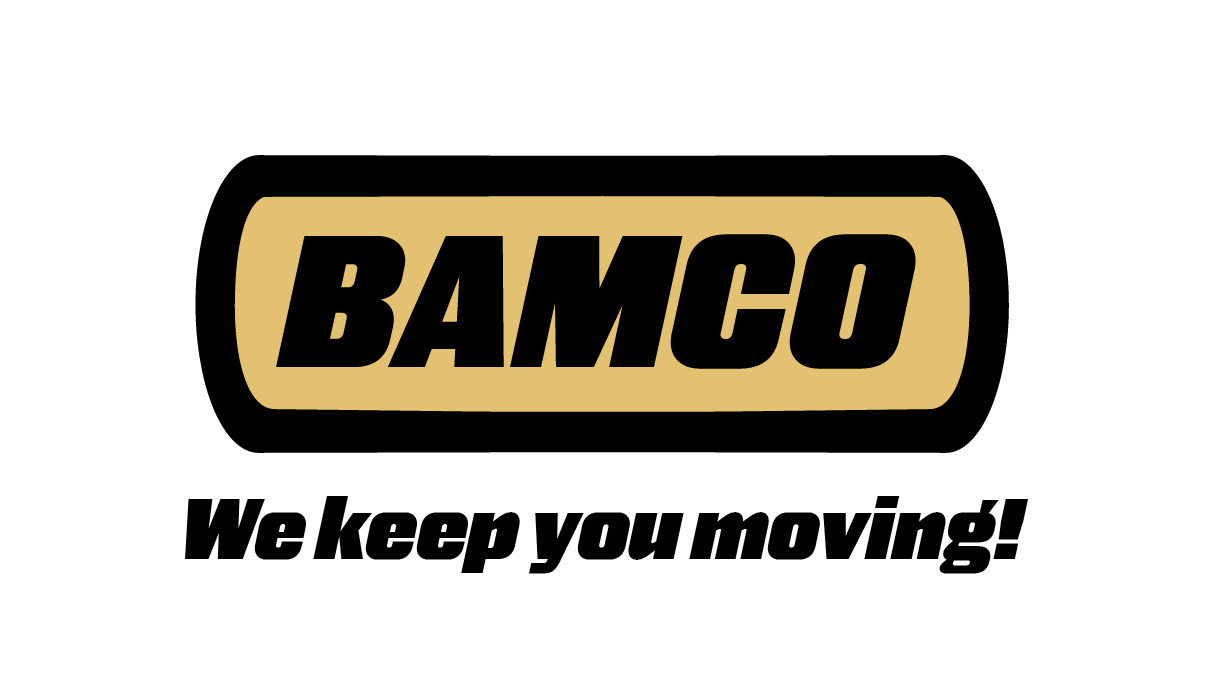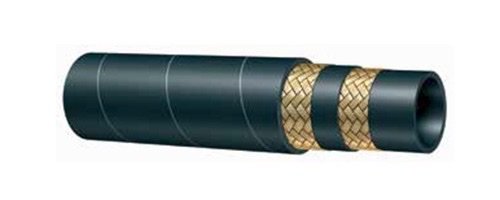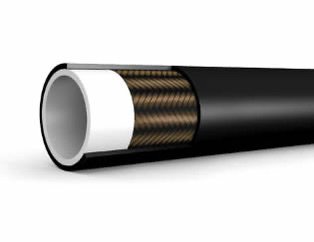When it comes to hydraulic hose, there are a lot of different options for varying applications. Most hoses are made of synthetic materials, natural fibers, or metal wire. Covers then change to fit the conditions that the hose will be used in. One also needs to keep in mind the categorization of pressure ratings. High pressure is 1500-6000 PSI, medium pressure is 300-3000 PSI, and low pressure is 300 PSI or less. With all of that being said, when it comes to most heavy duty equipment, such as excavators and bull dozers, there are three main kinds of hydraulic hose being used; thermoplastic, braided, and spiral.
Braided Hose/Two Wire hose
Braided hose is the most popular in the hydraulics industry especially in high pressure applications. This kind of hose consists of high tensile steel wires wound crisscross over each other like a metal cloth. This “metal cloth” is wrapped around synthetic rubber or elastometric hose. Braided hose is often referred to as two wire hose since there are usually two layers of steel wire braid. Let’s get into the pros and cons of braided hose.
Pros:
· This hose can achieve higher tensile stress which allows it to bend. That means that the hose has a lower minimum bend radius and can be fed through tighter areas.
· This hose still maintains a 4 to 1 burst ratio.
Cons:
· The pressure rating on braided hose generally goes down as you go up in inner diameter. Since flexibility is the key, they tend not to add extra reinforcement resulting in a higher outer diameter
· Impulses are more of an issue than continuous pressure. The braids tend to wear out as they expand and contract due to impulses.
Spiral Wire Hose
This hose consists of two or more sets of helically wrapped high tensile wire. The purpose of this hose is to be used in very high stress, high pressure, and high impulse settings. The PSI rating is the same across the board when it comes to ID sizes. Extra layers of reinforcement can be added (2,3,4, and even 6 layers of wire wrapped around the hose) to ensure that the required PSI is reached. This creates a very strong yet very rigid hose. Now let’s go over the pros and con of this kind of hose.
Pros:
· PSI does not decrease as you go up in ID. You just pick your ID and PSI and there will be a right hose for it.
· In braided hose, high impulses cause friction on the braids which causes the hose to fail. The helical structure of spiral hose is resistant to this.
Cons:
· This hose has a higher minimum bend radius. This leads to spiral hose only being used in applications where there are not very high space requirements.
· Since extra reinforcement is added to ensure a specific PSI and ID, this hose will have high a high outer diameter.
Thermoplastic Hose
This hose is very similar to the hose that is used to move compressed air or other gasses. Applications for thermoplastic hose generally do not exceed 3500 PSI. Thermoplastic hose is a hose that consists of three layers, however these layers are generally made from different materials. The core tube is generally made from nylon and sometimes can be made from plastics like polyamide, polyester, and flouropolymers. The second layer consists of two layers of a braided construction (like two wire). However, instead of just being made of steel wire it can also be assembled out of polyester or polyamide/aramid fibers. The outermost layer depends on what the hose needs to be resistant to. Polyurethane is great for resistance to abrasion, chemicals, solvents, cleaning fluids, saltwater, ozone, and UV. The outer layer can also be made from polyester, polyethylene, and PVC depending on the price and resistance needed. Cold temps require polyester elastomer or polytetrafluoroethylene. High temps need polyolefins, polyamides, or PTFE.
Pros:
· Since the reinforcements are not made of wire, you do not have to be concerned with kinking the hose.
· Has the ability to be assembled without crimping. Two piece swage style fittings can be attached to the hose in ten minutes with only wrenches. One piece push on fittings are also available for lower pressures and IDs
Cons:
· This hose is not available in higher PSI applications.
· PSI rating is reduced as you go up in ID.
Sources
https://blog.brennaninc.com/braided-hydraulic-hoses-versus-sprial
http://www.nitta.de/wp-content/uploads/2016/02/B-HO-12E.pdf#page=24
https://www.hoseassemblytips.com/thermoplastic-hydraulic-hose/
https://www.hydraulichoses.com/sae100-r2s-2-wire-hydraulic-hoses-p/r2s.htm



